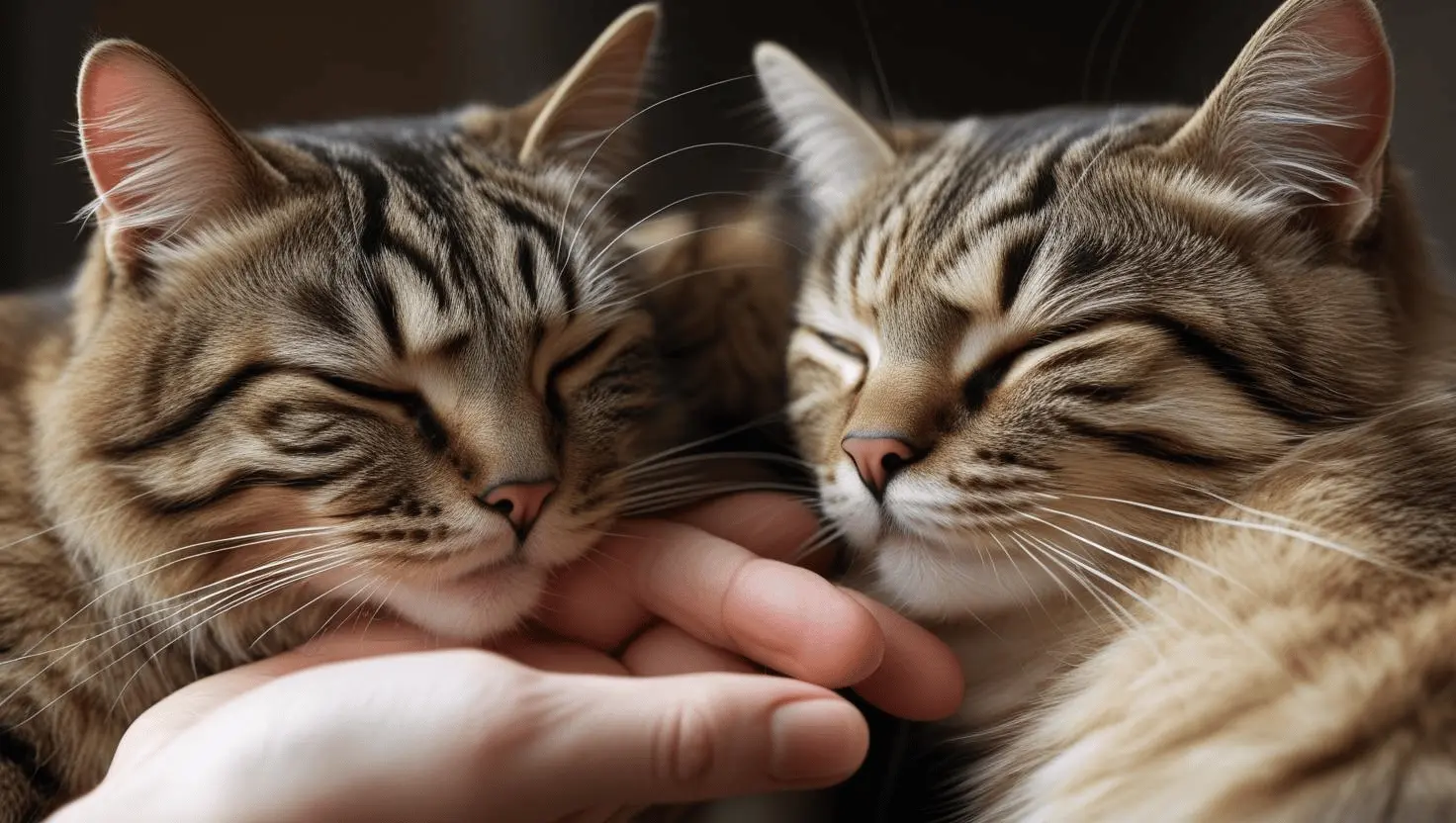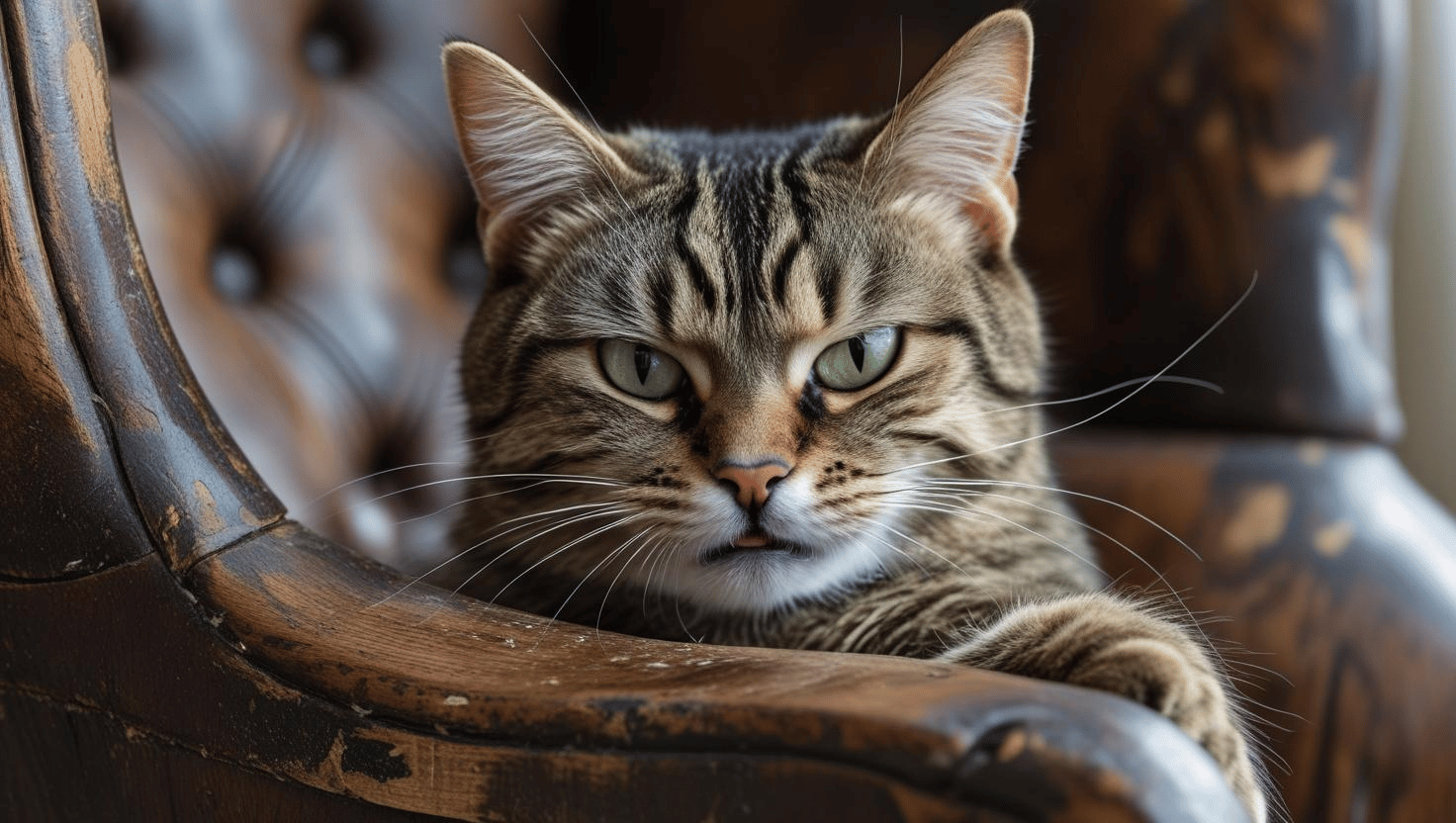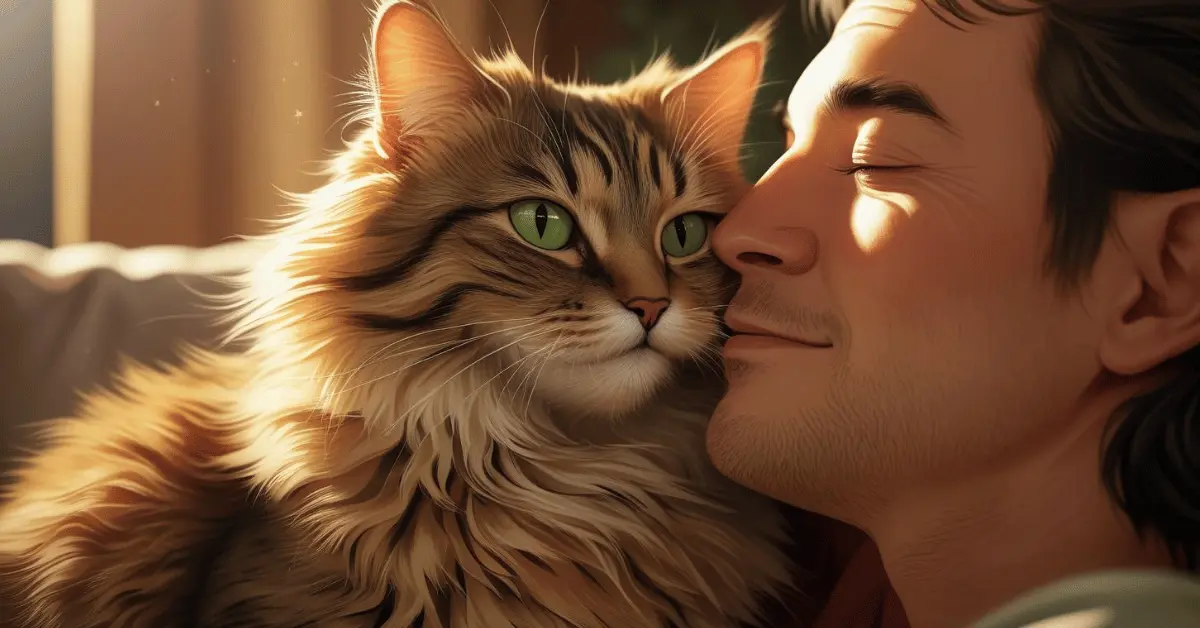If your cat rubs its face against you, it’s not just being cute — it’s speaking a silent feline language full of meaning. Cats use this behaviour to mark you with their scent, show affection, build social bonds, and sometimes even ask for attention or food.
1. Your Cat Is Marking You With Its Scent
Cats live in a scent-driven world. They have scent glands around their cheeks, forehead, and chin that release pheromones — invisible chemical signals that carry powerful messages.
When your cat rubs its face on you, it’s transferring its scent and leaving behind a personal “cat signature.” To your feline friend, you’re now part of their territory.
Why Cats Use Scent Marking
- Claim you as part of their family group
- Signal safety and familiarity
- Create a comfort zone filled with their own smell
- Warn other pets: “This human belongs to me!”
Example: If your cat rubs its cheeks on your laptop, couch, or even shoes, it’s creating a shared scent environment — one where it feels safe, loved, and at home.
2. A Sign of Love and Trust
Among all cat bonding behaviours, face rubbing is one of the most affectionate. Cats only do this with people they deeply trust. If your cat chooses you as its “rubbing partner,” consider it a compliment.
How Cats Express Affection Through Face Rubbing
- Slow blinking → Cat’s way of saying “I love you.”
- Soft purring → Feeling happy and relaxed.
- Leaning against you → Seeking closeness and comfort.
- Rubbing followed by sitting nearby → Your cat sees you as its safe space.
Example: If your cat greets you at the door by rubbing its face on your legs, it’s not just excited — it’s reaffirming your bond every single time.
3. Social Headbutts: The Feline Hug

Sometimes, cats go beyond gentle rubbing and give you a soft headbutt. This adorable act is called bunting, a behaviour rooted in feline social bonding.
Among cats, bunting is how they share scents, strengthen relationships, and form group identities. When your cat headbutts you, it’s including you in its inner circle.
Why Cats Headbutt Each Other and You
- Sharing scents → Creates a unified “group perfume.”
- Building trust → Cats only bunt with those they feel safe around.
- Strengthening social bonds → You’re now part of their chosen family.
Fun Fact: In the wild, cats rub faces to form a communal scent identity. When your cat does it to you, it’s literally saying: “You’re one of us now.”
Related Posts
- Why Do Cats Meow at Night? 4 Fascinating Explanations
- Why Do Cats Knead Blankets and Pillows? 5 Surprising Reasons
- Why Do Cats Sit on Laptops and Books? 3 Hilarious Reasons
4. Asking for Food, Play, or Attention
Not all face rubbing is about love — sometimes, it’s a gentle request. Cats are clever and learn quickly that rubbing against you gets your attention.
How to Tell If Your Cat Wants Something
Pay attention to what your cat does alongside rubbing:
- Meowing softly → Likely asking for food.
- Paw tapping your arm → Wants interaction or playtime.
- Rubbing then walking toward the kitchen → A polite dinner hint.
- Purring louder than usual → Seeking cuddles or reassurance.
Example: If your cat rubs its face on your hand while you’re at the desk, it’s probably demanding “Put down that laptop and pet me!”
5. When Face-Rubbing Could Signal a Problem

In most cases, rubbing is a healthy and affectionate behaviour. However, sudden changes or excessive rubbing might indicate an underlying issue.
Possible Reasons for Excessive Rubbing
- Skin allergies or irritation → Face rubbing provides relief.
- Flea or mite infestations → Itchy cheeks make cats rub more.
- Stress or anxiety → Over-rubbing helps them self-soothe.
- Eye or nasal discomfort → If one side is rubbed excessively.
Pro Tip: If your cat suddenly starts rubbing aggressively or shows hair loss, redness, or swelling, it’s time to visit the vet.
6. How to Respond When Your Cat Rubs Its Face on You
When your cat rubs against you, it’s offering trust and affection — here’s how you should respond:
- Gently scratch under their chin or behind the ears.
- Slow blink back to mimic feline affection.
- Talk softly — your voice reassures them.
- Never push them away — it can hurt trust.
Tip: Most cats prefer cheek and chin scratches over head pats — try it, and watch their happy reaction.
7. Other Cat Body Language You Should Know

Face rubbing is just one piece of the puzzle when decoding your cat’s body language. Here are more behaviours to watch:
- Kneading blankets → Comfort-seeking and emotional security.
- Rolling on their back → Shows trust but not always an invitation to touch.
- Tail wrapping around you → Sign of deep affection.
- Slow blinking → The cat equivalent of saying, “I love you.”
The more you learn to “read” your cat, the stronger your connection will become.
Common Questions
Is it bad if my cat rubs its face too much?
Occasional rubbing is normal, but excessive rubbing may indicate allergies, fleas, or irritation. Visit a vet if you notice redness or discomfort.
Why does my cat rub its face on me before eating?
It’s your cat’s cute way of asking for food while also marking you with scent to strengthen your bond.
Why does my cat rub its face on me and other objects?
Cats rub their faces on people and objects to mark territory, spread their scent, and create a safe, familiar environment. It’s a natural bonding behavior.


1 thought on “Why Does My Cat Rub Its Face Against Me? 7 Cute Explanations”